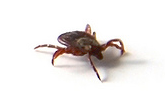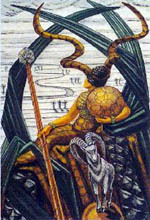The public library seems to have fallen out of favor, of late. Budgets are slashed. Circulation is down, so the collection must be popularized. Librarians have lost that cultural authority that once let them enforce a stern rule of silence; they even seem grateful for the shenanigans of any Strewwelpeter left to wander around by his piggish parents. What use has the common public library in these days of Internet?
When I moved to Pennsylvania a decade or so ago, I’d fallen out of the habit of libraries. I came from Ann Arbor, an Elysian town of bookstores used and new. Walking the four blocks to downtown, I whiled away many a Saturday strolling from one to the next: West Side, Dawn Treader, David’s . . . there were at least eight within the range of a casual perambulation. Perhaps a drive to Ypsilanti to visit Cross St; a jaunt down to Toledo to Frog Town.
Part of the pleasure was to watch the slow evolution of each inventory, trolling patiently through the shelves wrapped in the scent of old paper. The goal, though, the thrill, was in the kill: a volume of Scholem; a remembered book from childhood (Bellairs, say, with a treasured Gorey frontispiece); a worn paperback of Dick or Zelazny; an issue of Aman’s Maladicta from 1981.
At home, the books piled higher, far exceeding the book-foot capacity of the shelves. I have never sought books as artifacts to be hoarded in alabaster isolation. They are to be kept near at hand, read and handled, annexes to my palace of memory.
When F- entered private school in Pennsylvania, our resources were turned to this new end, and we entered a long period of austerity. Sad as it was, I had to curb my acquisitions.
When one has a personal library, one can survive a year or two of drought. Old volumes are rediscovered. A small cache purchased long ago, boxed and forgotten, emerges from the attic. But after a time, this pales. The soul of the bibliomane craves novelty, the exploration of new semiotic terrain.
It was in this environment of penury and deprivation that I began to rediscover the pleasures of the public library, but slowly. At first, I was dismayed at the plebian assortment. Where was the Calvino? Barely more than one shelf of philosophy? As for the computer books, I would be hesitant to poke them with a stick.
Desperation, though, acts as a Maslovian aqua regia on aesthetic hauteur. The economics of “free” are hard to resist.
As I explored the stacks, I began to realize that my initial impression was awry. As Boswell observed, “But what can a man see of a library being one day in it?” The shelves were not static, and three subsequent visits would reveal new books in each section as they returned from circulation.
Most significant, though, was the lack of risk. If out of a dozen books taken home only one proved to be of interest, nothing was lost. I could allow my tastes to run unfettered, sating my bibliophagy with sheer volume.
Austerity has eased, of late, but the library habit remains. Only rarely will there be a stack of less than two dozen circulating volumes piled by my chair in the dining room. The library blunts the edge of my daily hunger, so the occasional feast is all the sweeter.





